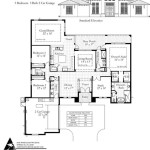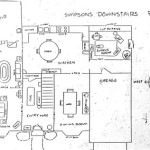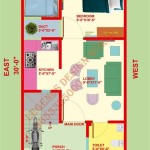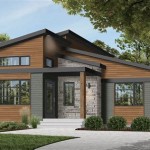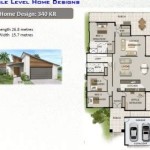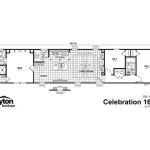```html
Dream House Floor Plan Design: A Comprehensive Guide
The dream house, a concept deeply ingrained in the aspirations of many, rarely materializes without meticulous planning, and at the heart of that planning lies the floor plan. A floor plan serves as the blueprint for the entire structure, dictating not only the spatial arrangement but also the functionality, flow, and overall livability of the residence. Designing a dream house floor plan involves a multifaceted approach, considering various factors ranging from lifestyle and budget to site conditions and aesthetic preferences. This article explores the crucial elements involved in designing a dream house floor plan, offering a comprehensive guide to navigating the complexities of the process.
Designing a floor plan goes beyond simply drawing lines on paper or arranging rooms in a digital interface. It requires a holistic understanding of how occupants will interact with the space, considering their daily routines, hobbies, and future needs. A well-designed floor plan optimizes the use of available square footage, minimizes wasted space, and creates a harmonious balance between different areas of the house. Careful consideration must be given to the placement of rooms, the flow of traffic, and the integration of natural light and ventilation.
Understanding Lifestyle and Needs
The foundation of any successful floor plan design rests upon a thorough understanding of the homeowner’s lifestyle and needs. This involves identifying the number of occupants, their ages, and their individual requirements. A young family with small children will have different needs than a retired couple or a single professional. The number and type of bedrooms and bathrooms, the size and layout of the kitchen and living areas, and the presence of specialized spaces such as home offices, gyms, or hobby rooms will all be dictated by the specific needs of the occupants.
Furthermore, the floor plan should reflect the homeowner's preferred style of living. Are they frequent entertainers who require a large, open-plan living and dining area? Do they value privacy and prefer segregated living spaces? Do they enjoy spending time outdoors and require seamless integration between indoor and outdoor spaces? These questions will influence the overall layout and flow of the floor plan.
Future-proofing is another crucial consideration. As families grow and needs change, the floor plan should be adaptable to accommodate these changes. This may involve designing flexible spaces that can be easily converted from one function to another, or incorporating features such as wider doorways and hallways that can accommodate mobility aids in the future. Thinking ahead helps ensure that the dream house remains functional and comfortable for years to come.
Finally, accessibility needs should be considered from the outset. This includes ensuring that the house is accessible to individuals with disabilities, taking into account factors such as ramps, elevators, and accessible bathrooms. Universal design principles aim to create spaces that are usable by all people, to the greatest extent possible, without the need for adaptation or specialized design.
Optimizing Space and Flow
Once the lifestyle and needs of the occupants have been thoroughly analyzed, the next step involves optimizing the use of space and creating a logical flow throughout the house. This requires careful consideration of the size and shape of each room, the placement of doors and windows, and the circulation patterns within the house.
Open-plan living has become increasingly popular in recent years, and for good reason. It creates a sense of spaciousness and allows for greater interaction between different areas of the house. However, open-plan living is not suitable for everyone. Some people prefer more defined living spaces that offer greater privacy and separation. The ideal floor plan will strike a balance between open and closed spaces, creating a sense of flow while still providing areas for retreat and relaxation.
The placement of rooms is also crucial. Bedrooms should be located away from noisy areas of the house, such as the living room and kitchen. Bathrooms should be easily accessible from all bedrooms. The kitchen should be located near the dining area and the garage, for easy access to groceries. The entry should be welcoming and inviting, and should provide a clear transition from the outside world to the interior of the house.
Circulation patterns within the house should be carefully considered. Hallways should be wide enough to allow for comfortable passage, and should be well-lit. The flow of traffic should be logical and intuitive, minimizing the need to walk through one room to get to another. Dead-end hallways should be avoided, as they can create a sense of claustrophobia and wasted space.
Natural light and ventilation are essential elements of a well-designed floor plan. Windows should be strategically placed to maximize natural light and provide views of the surrounding landscape. Cross-ventilation should be encouraged to promote airflow and reduce the need for artificial cooling. Skylights can be used to bring natural light into areas of the house that do not have access to windows.
Storage is another crucial consideration. Adequate storage space should be provided in all areas of the house, including bedrooms, bathrooms, kitchens, and hallways. Built-in storage solutions, such as closets and shelves, can help to maximize space and keep the house organized.
Integrating Site Conditions and Aesthetic Preferences
The design of the floor plan should also take into account the specific characteristics of the building site. The orientation of the house, the slope of the land, the presence of trees and other vegetation, and the prevailing wind and weather conditions will all influence the design of the floor plan.
The orientation of the house is particularly important. In general, houses should be oriented to maximize solar gain in the winter and minimize solar gain in the summer. This can be achieved by orienting the long axis of the house east-west, with large windows facing south. Overhangs and awnings can be used to shade the windows in the summer, while allowing sunlight to penetrate the house in the winter.
The slope of the land can also influence the design of the floor plan. On a sloping site, it may be possible to create a walkout basement or a split-level house. The floor plan should be designed to take advantage of the natural topography of the land.
The presence of trees and other vegetation can also influence the design of the floor plan. Trees can provide shade and privacy, and can help to reduce energy consumption. The floor plan should be designed to preserve existing trees and vegetation, and to integrate them into the overall design of the house.
The prevailing wind and weather conditions should also be taken into account. In windy areas, the house should be designed to minimize wind resistance. In areas with heavy rainfall, the house should be designed to prevent water damage.
Finally, the floor plan should reflect the homeowner's aesthetic preferences. The style of the house, the materials used, and the overall design should be consistent with the homeowner's personal taste. The floor plan should be designed to showcase the homeowner's furniture and artwork, and to create a space that is both beautiful and functional.
Designing a dream house floor plan is a complex and challenging process, but it is also a rewarding one. By carefully considering the lifestyle and needs of the occupants, optimizing the use of space and flow, and integrating site conditions and aesthetic preferences, it is possible to create a floor plan that is both functional and beautiful. A well-designed floor plan will not only enhance the livability of the house, but will also increase its value and appeal. Consulting with an architect or experienced designer can provide invaluable assistance in navigating the complexities of the process and ensuring that the dream house becomes a reality.
```
Create Your Dream Home Now Planner5d

Discover The Floor Plan For Dream Home 2024

Mediterranean Dream Home Plan Italian Floor

Love This Size How To Plan Floor Plans House

Discover The Floor Plan For Dream Home 2024 Behind Design

Discover The Floor Plan For Dream Home 2024

One Y Dream Home Php 2024036 1s Pinoy House Plans

How To Read The Blueprint Of Your Dream Home

The Globe

Dream House Plans Make Your Dreams Come True

